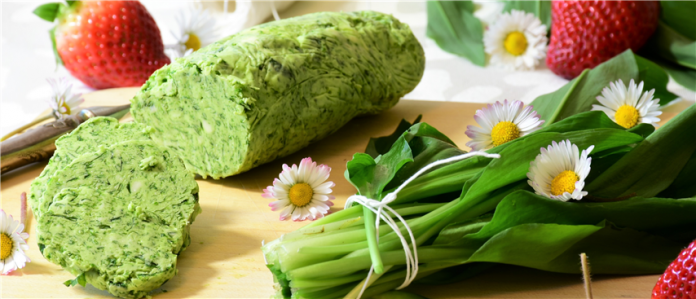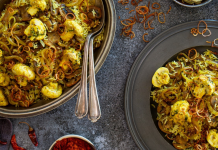Here’s a challenge for adventurous home chefs. Consider adding lesser-known herbs to your repertoire, like the delicately flavoured lemon balm, chervil and salad Burnet. Coriander too, although it is plenty zesty and is one of those herbs that some people love to hate.
What all these herbs have in common is that they can all be sown in March as they thrive in autumn’s cooler weather. Make space by hauling out edibles that have reached the end of their productive life.

What’s to recommend them? Lemon balm has a subtle lemon flavour that shows up well in desserts, drinks and soothing teas. Chervil has that classic anise flavour and is one of the Fines-herbs in French fine dining. It is used to flavour sauces and soups. Salad Burnett’s young leaves have a fresh cucumber flavour.
Coriander, also known as cilantro or Dhania, is much more aromatic. It is very popular in India where the leaves are used as a garnish and the seeds are ground and used to flavour curries.
How to grow:

- All these herbs like light, well-drained soil and can be grown in full sun with some afternoon shade. Enrich the soil with compost before planting.
- Sow seed directly into the soil or in seed trays and transplant when the seedlings are a manageable size. They can be grown in pots as well.
- Water regularly so that the soil remains moist but not soggy. Lemon balm in particular doesn’t like soggy soil.
- Fertilise with an organic liquid fertiliser like Margaret Roberts Organic Supercharger once the herb seedlings have germinated and thereafter once a month. It contains both macro and micronutrients.
Lemon Balm ( Melissa officinalis)

Lemon balm has a light lemon fragrance and flavour. It is a compact, leafy herb (30 to 40cm high) that’s also suitable for window boxes and pots. Space plants 30cm apart. It flowers in summer, producing small white blossoms with sweet nectar that attracts the bees. In very cold areas it dies down in winter but will sprout again in spring. If planted in too much shade, the plant will become infected with fungal diseases during the rainy season.
Harvesting: Regular picking will produce a bushier, leafier plant. Pick the leaves in the afternoon when its essential oils are the strongest.

Culinary: While its flavour is more subtle than a lemon, the leaves still add that lemony freshness to salad dressings, herb vinegars, summery drinks, and desserts such as ice cream, sorbet, and fruit dishes. It makes a calming tea for sipping after dinner as a digestive or for winding down after a busy day.
How to make lemon balm tea:
Coarsely chop 2 tablespoons of fresh leaves, put in a cup, or glass jug, and pour over 1 cup of boiling water. Cover and let stand for 5 minutes, remove the herb and drink. Add honey for extra flavour. Drink after a meal or before going to bed.
http://www.kirchhoffs.co.za/product-category/herbs/balm/
Chervil (Anthriscus cerefolium)

Chervil is associated with French cuisine and especially ‘Fines Herbes’ , a mix of chervil, tarragon, parsley and chives that’s used to add an elegant, subtle flavour to mild dishes. It is also classified as a sweet herb ( along with fennel, anise and sweet basil) because it has a fleeting sweetness and pairs well with salty foods to provide contrasting flavours that are pleasing to the palate.
Growing: Chervil is a compact herb, growing 30cm high and wide. It’s also known as French parsley for its lacy green leaves that are similar to parsley. Its suitable for growing in pots and window boxes, and regular harvesting will encourage it to grow into a bushy plant with plenty of leaves.
Culinary: The fresh leaves have a delicate flavour, almost like a cross between tarragon and parsley. Chervil on its own or with other herbs is best added at the end of cooking or sprinkled over food as a garnish. The leaves do not retain their flavour when dried or stand up to long cooking.

On its own Chervil is good for flavouring egg and cheese dishes, vegetables, white sauce, soups, chicken and white fish. The raw leaves provide additional vitamin C, carotene, iron and magnesium so are a nutritious addition to salads, herb dressings and herb butters.
http://www.kirchhoffs.co.za/product-category/herbs/chervil/
Coriander (Coriandrum sativum)

Coriander (Coriandrum sativum) is particularly easy to grow from seed. Space plants 30cm apart. Seed germinates within two to three weeks. Plants grow 45-60cm high and the leaves can be harvested early as mini leaves or from 60 days.
Harvesting: Pick the leaves just before using because the soft leaves wilt quickly. The leaves are not suitable for drying. To collect the seeds, allow the plant to flower. When it dies, pull the plant out, hang it upside down, covered with a brown paper bag and the seed will fall into the bag. Harvest the roots when lifting the plant; they have a nutty flavour.
Culinary: Coriander doesn’t stand up to heat. To enjoy its flavour, use the fresh leaves in salads and sandwiches, salsa and guacamole, or as a garnish for chicken, pork and beef dishes as well as for stir fries and curries.

Coriander seeds have quite a different flavour and the dried seeds are ground and used as a spice for curries. Chewing the seeds freshens the breath, especially after eating garlic. Grate the roots into Thai dishes, soups and curry pastes.
http://www.kirchhoffs.co.za/product-category/herbs/coriander/
Salad Burnet (Sanguisorba minor)

Salad Burnet is a lesser-known perennial herb that is well worth discovering. The fresh young leaves have a nutty yet slightly cucumber-like flavour. This low growing, bushy herb has small red flowers and is a good border plant in the flower or herb garden. In very cold areas it may die back in winter but will shoot again in spring. To keep the plant looking good remove dead leaves and spent flowers.
Harvesting: Pick the young leaves frequently to encourage new growth. Remove the flower heads to ensure the continuous sprouting of new leaves.
Culinary: the cucumber-flavoured leaves can be used in salads and salad dressings, chopped up and added to cream cheese or soft cheese, used in herb butters. In winter it’s a valuable green for adding to soups, casseroles and sauces. The leaves contain vitamin C and if made into a tea can be drunk as a tonic.
http://www.kirchhoffs.co.za/product-category/herbs/salad-burnett/
Article supplied by Alice Coetzee






